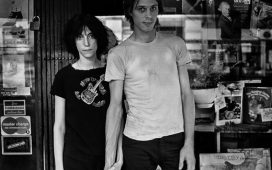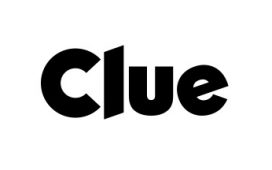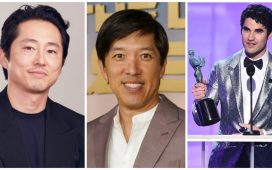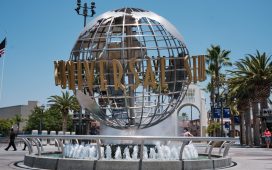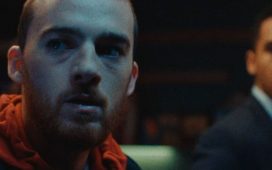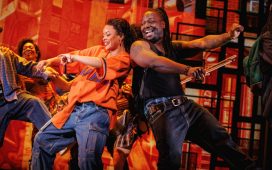“Uncut Gems” doesn’t just offer up the anomaly of Adam Sandler, an actor best known for broad comedies, venturing into dramatic territory. Even more unusual, it’s the rare modern movie to include a Passover seder.
Directed by brothers Josh and Benny Safdie, “Uncut Gems” follows Howard Ratner (Sandler), a jeweler in New York’s Diamond District. He’s also a compulsive gambler with questionable judgment, in part because he relishes in the chaos of upping the ante rather than settling his debts. Howard’s domestic life is equally in disarray — he’s dating his employee Julia (Julia Fox), though he’s still married to Dinah (Idina Menzel).
The Passover sequence, centered around one of the holiest holidays in the Jewish religion, gives audiences a brief opportunity to relax in a film that’s otherwise rife with tension. It’s a fleeting, unfettered look at what a normal life could look like for Howard if he wasn’t hellbent on risking it all.
The Safdie brothers stuffed the scene with nods to Jewish culture, including reciting the 10 plagues, reading the Haggadah and searching for the afikomen, a stashed piece of matzo that’s found for a reward.
Passover, which commemorates the Israelites’ freedom from slavery in Egypt, helps illustrate the suffering of a putz like Howard. But the Safdies attest it’s a coincidence they landed on that particular gathering. That’s because timing happened to intersect with an NBA playoff game set in 2012 that proves pivotal in the film. “It’s one of those creative fate situations,” Josh Safdie says.
The Safdie brothers talked to Variety about how they brought Passover to the big screen in “Uncut Gems,” which is playing in theaters nationwide.
A recent New York Times profile of Adam Sandler says “a character does not become Jewish by accident.” Do you agree?
Josh Safdie: Yes, of course. No character becomes any character by accident. In particular, the Jewish characters in the film are either related or they’re working with each other.
Benny Safdie: In this case, we wanted him to be a very strong character because a lot of time in film, the Jewish characters are a little bit nebbish or weak. It was a cognitive discussion about Howard not backing down and always being tougher than you’d expect.
How did the Passover scene come about?
Josh: The movie was developed over the course of 10 years, but we had always written in some sort of Jewish gathering. The high holiday depended on which basketball player we were going to write around. When Kevin Garnett became the character, we centered it around a playoff game, which coincidentally coincides with the Jewish calendar when Passover takes place. Form always follows function, and I believe mysticism follows function as well. The fact that the movie takes place around Passover, the holiest of holidays, is so apt. This particular holiday, you’re supposed to derive much meaning from suffering, in a movie about a guy where your hero is enduring and suffering.
What specific experiences did you bring in?
Josh: Once we landed on Passover itself, you start to mine your own personal experiences with Pesach and certain intricacies of thousands of years of tradition connected to this barbaric story. The way Jewish assimilation has happened, you have these xeroxed Haggadahs, one person has the nice Haggadah. You have the kids’ table because they’re not men yet — when you’re bar mitzvahed, you can sit at the adults’ table.
Benny: Even having an afikomen scene. Showing that part, the post-dinner relaxation where everyone is just talking — it’s a strange holiday where you have all of these people talking about suffering and plagues and you have to be together with family at the same time.
Josh: Growing up, the only other thing we had was the “Rugrats” Passover special. Ronald Bronstein, who we wrote the movie with, something his mother would do every passover is she would try on her bar mitzvah dress every year to show it still fit.
That was personally upsetting to me because I definitely can’t fit into my bat mitzvah dress.
Josh: What’s great about the movie is Idina’s sister says, “I hate you, how can that still fit you?” And Idina’s character says, “I was 20 pounds overweight!”
How did you decide which parts of the seder to include?
Josh: The plagues seemed to be most relevant for the film. [Singing the song] “Dayenu” was in high contention. Scott Rudin was very adamant, he’s like, “We can’t have Idina Menzel in this film and not hear her sing! We need to film Sandler and her singing ‘Dayenu’ together. We need it!” We have that on camera. We didn’t film the four questions because it seemed too obvious. It would have been boring to hear.
Benny: [The four questions] are important to the holiday, but not to the plot. We’re such inclusive filmmakers that we encouraged everyone to bring a piece to the scene.
Did you have to explain Passover to anyone on set?
Josh: Not in the slightest. The only non-Jewish person on camera was Eric Bogosian. Everybody who was partaking in that scene has a long tradition of sitting at Pesach dinners.
What do you want the audience to take away from the scene?
Josh: It’s a pause from everything that’s happening. You see what Howard’s life is other than the part we have in addition to the matches. That’s so necessary to understanding the film. If it wasn’t there, I don’t know if other things would click into place.
This interview has been edited and condensed for clarity.
